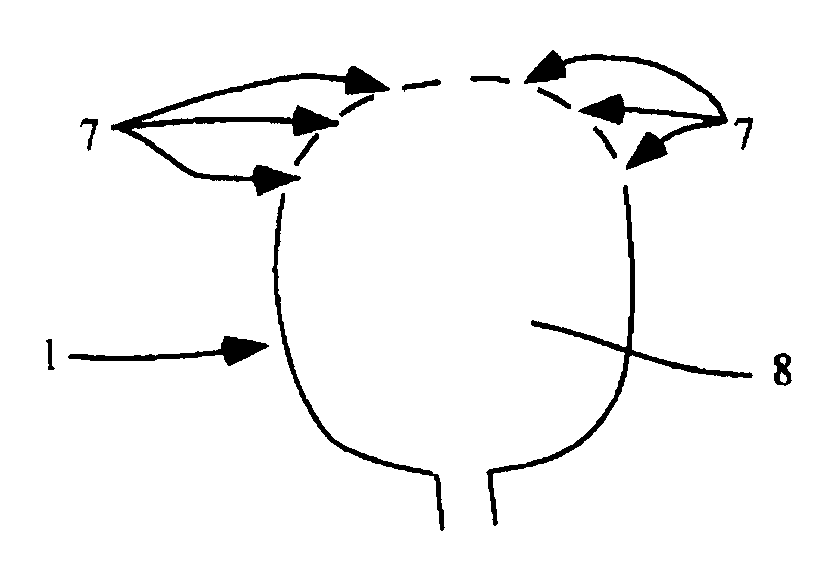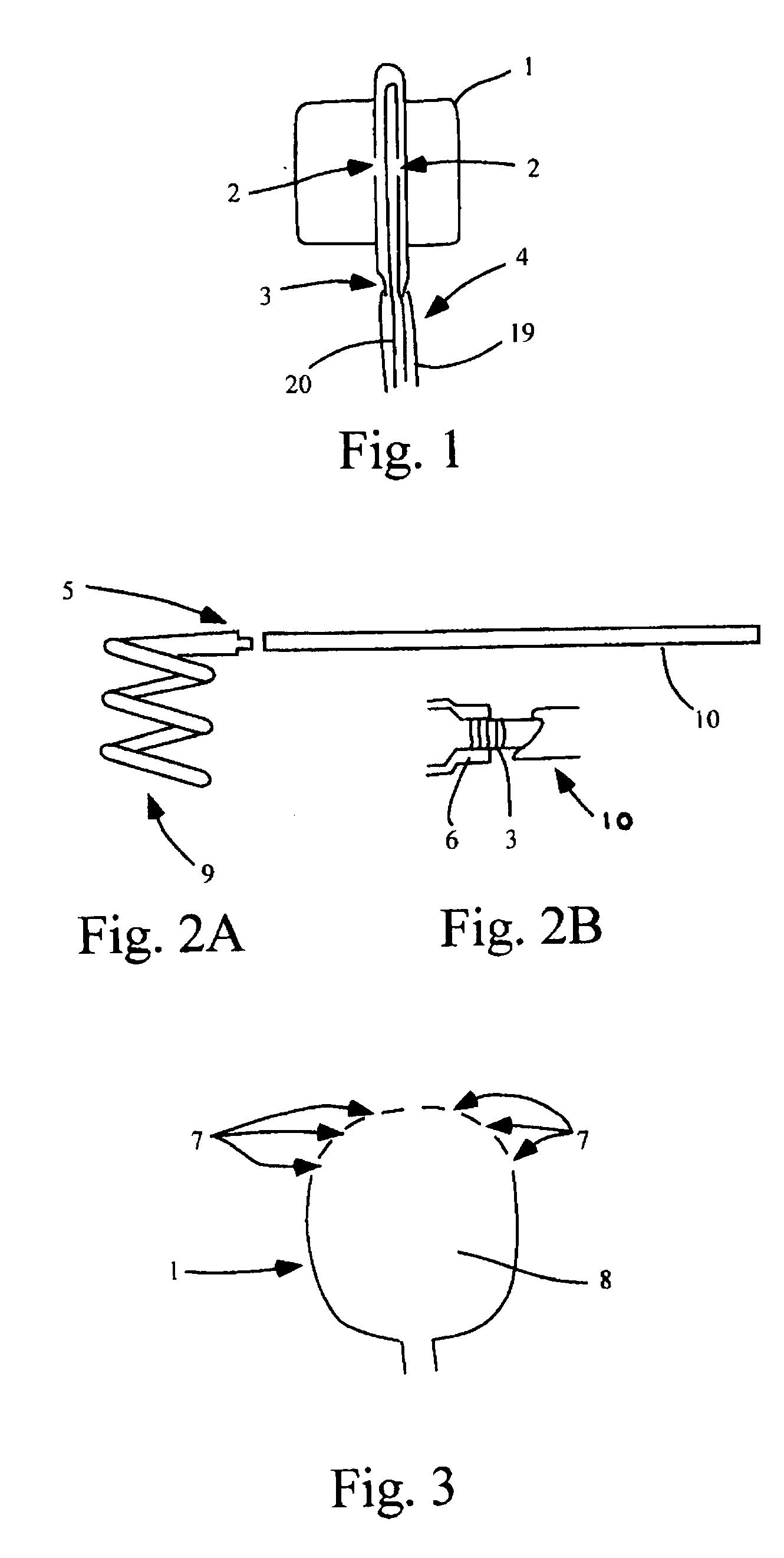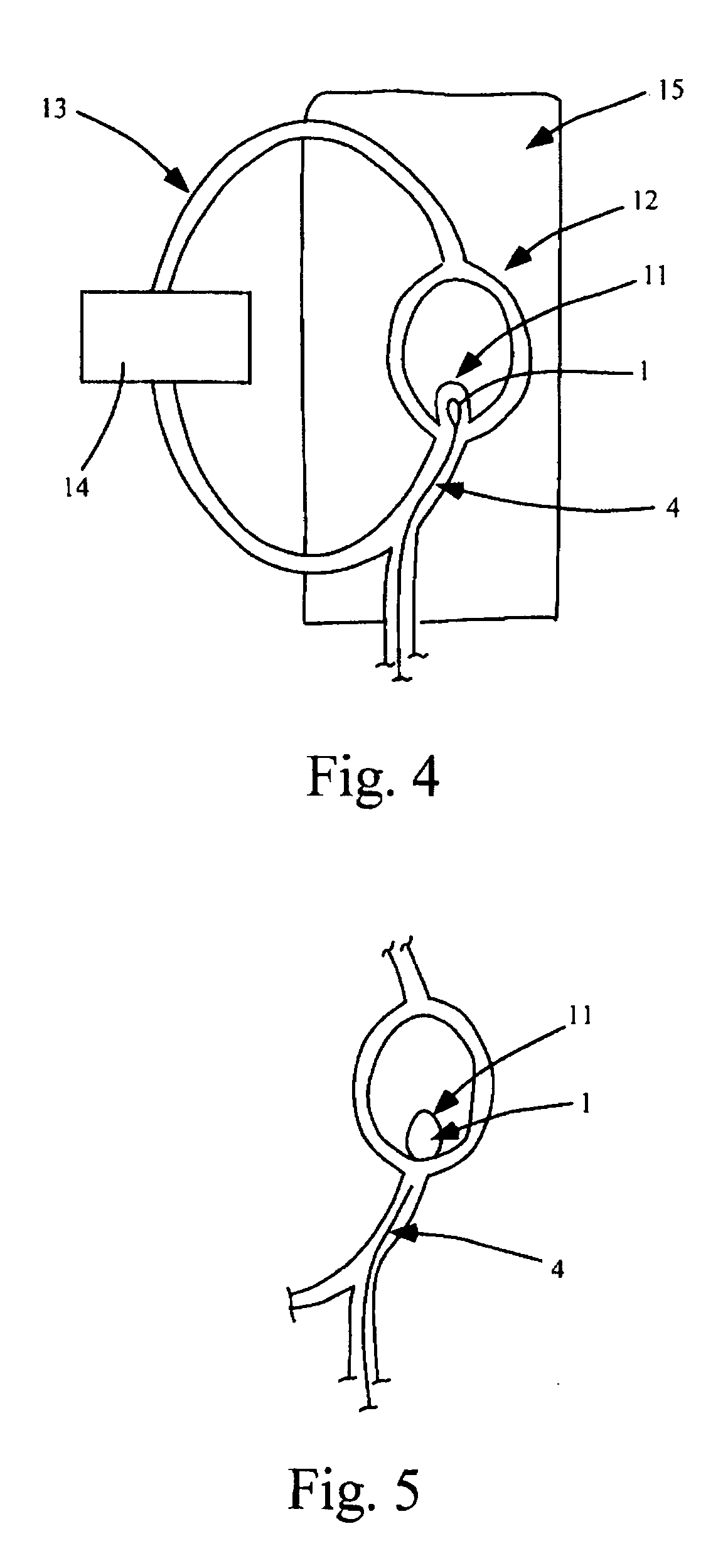Aneurysm treatment using semi-compliant balloon
aneurysm treatment and semi-compliant technology, applied in the field of aneurysm treatment using semi-compliant balloons, can solve the problems of small ruptures that cannot be effectively reconstructed, aneurysms that are out of the normal artery path, and bleeding into the space between the brain and the arachnoid membrane, so as to achieve simplified deployment procedures
- Summary
- Abstract
- Description
- Claims
- Application Information
AI Technical Summary
Benefits of technology
Problems solved by technology
Method used
Image
Examples
example i
Aneurysm Cast Making for Testing Balloon
[0153] In order to create our in vitro test platform for the deployment of our device, we utilized a blow molding process. Using this blow molding process, we were able to create soft, compliant models of the aneurysm.
[0154] The basic idea behind this blow molding process is to first heat a section of vinyl tubing until soft, and then introduce compressed air into the tubing to expand and permanently deform the shape. If the tubing is constrained within a TEFLON mold, the tubing will expand to the form of the mold when compressed air is introduced.
[0155] The tubing can be heated one of two ways: through direct heating of the outer tubing surface or heating through the interior pathway. Points exposed to greater heat will expand more than its surrounding area, therefore, direct heating of the outer surface can be used to make arbitrary shapes by manipulating the localized heating of the tubing. On the other hand, while heating ...
example ii
Balloon Manufacture
[0163] A urethane balloon of 12 mm diameter was made through blow molding or vacuum forming with appropriate glass casts while the double lumen catheter was manufactured by extrusion of clear PEBAX resins through an extrusion machine. However, the test device was assembled manually.
[0164] Flourinated ethylene propylene (FEP) heat shrink tubing was used to bond the urethane balloon to the double lumen catheter. When heat was applied to the tubing, the shrinking of the tubing as well as the thermal molecular compatibility of the urethane and PEBAX allowed a strong bond to form between the two materials. The test device consisted of a double lumen catheter with a detachable distal section adjoined via a stainless steel coupling to the rest of the catheter (see FIG. 13). Hence, the assembly of the device could be separated into two portions as follows.
Detachable Distal End
[0165] The distal end was manufactured as follows:
[0166] 1. The collars of the urethane bal...
example iii
In Vitro Testing
(i) Test Setup
[0180] In vitro tests for proof-of-concept devices were performed for prototypes of scale 5× and 2×. The setup for the in vitro test is shown in FIG. 4. Tests were performed in simplified intracranial vasculature phantoms manufactured to corresponding scales from heat-treated PVC tubing as describe in Example I.
[0181] The model vasculature in FIG. 4 consists of a simplified Circle of Willis replica (12) with a wide neck aneurysm at the bifurcation of the basilar artery (11). The vasculature phantom was placed in a water bath (15) of phosphate buffered saline solution mimicking the pH and electrical properties of blood. Hemodynamic conditions were simulated by driving a pulsatile-flow with a Harvard pump (14). As shown, the test circuit includes the phantom vasculature and the bath. An entry point in the vasculature phantom allows the test device to be inserted and delivered to the aneurysm site.
(ii) In Vitro Test at 5× Scale
[0182] In the 5× scale...
PUM
 Login to View More
Login to View More Abstract
Description
Claims
Application Information
 Login to View More
Login to View More - R&D
- Intellectual Property
- Life Sciences
- Materials
- Tech Scout
- Unparalleled Data Quality
- Higher Quality Content
- 60% Fewer Hallucinations
Browse by: Latest US Patents, China's latest patents, Technical Efficacy Thesaurus, Application Domain, Technology Topic, Popular Technical Reports.
© 2025 PatSnap. All rights reserved.Legal|Privacy policy|Modern Slavery Act Transparency Statement|Sitemap|About US| Contact US: help@patsnap.com



